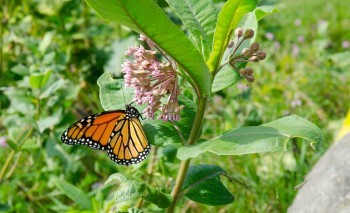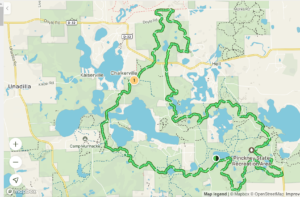 Eastern monarch butterflies are one of the most well-known butterflies in North America. These gorgeous orange, black and white butterflies are a staple of Michigan summers, and they need our help. Eastern monarch butterflies are one of the most well-known butterflies in North America. These gorgeous orange, black and white butterflies are a staple of Michigan summers, and they need our help.
The eastern monarch butterfly population has been declining over the last 20 years, primarily due to habitat loss in its summer range – including Michigan – and Mexico, where these beauties spend the winter. Due to the declining population, monarch butterflies are listed as a candidate species under the federal Endangered Species Act, and their population status is under review annually. Learn more at FWS.gov/SaveTheMonarch. You can help monarchs as you work in your backyard, garden or community garden this year by following these tips to make these spaces beneficial for pollinators. You can even help create and maintain a certified monarch waystation. Monarchs rely on habitat with milkweed plants. Milkweeds are the only species of plant on which monarchs lay their eggs, are the only plants that monarch caterpillars eat, and provide nectar-producing flowers as food for adult butterflies. “The monarch and other pollinators need both early- and late-blooming plants as well as plants that flower mid-summer, a diverse mix which can be found in grasslands, agricultural fields and urban backyard habitats,” said Mike Parker, conservation partners program specialist with the DNR. “These habitats can also support milkweeds, which are essential for the monarch’s reproductive cycle.” If you spot monarchs or their caterpillars this summer, be sure to report sightings to help inform conservation decisions here in Michigan! You can report monarch sightings and track their journey at Journey North. Find out more about ways you can help monarchs by visiting Michigan.gov/Monarchs or contacting the DNR Wildlife Division at 517-284-9453. |














